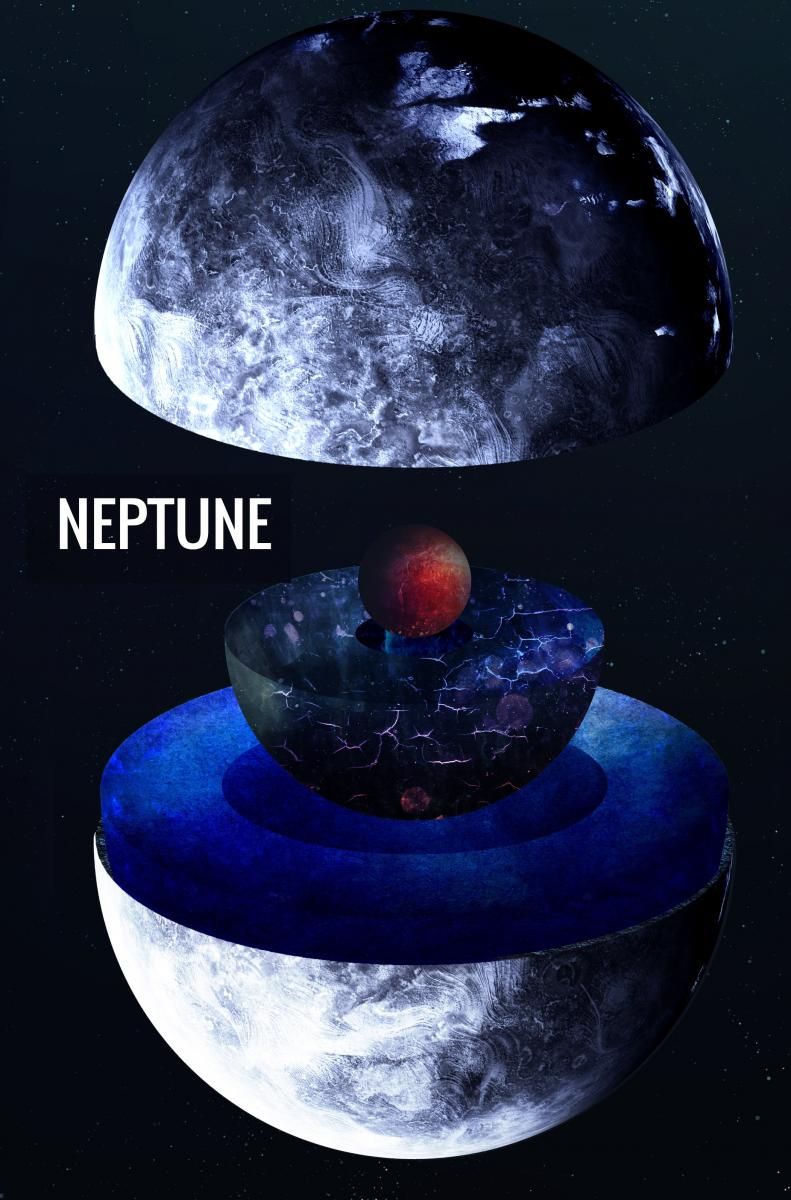The outer “ice giant” planets, Neptune and Uranus, have plenty of mysteries. One of the biggest is where exactly they got their magnetic fields. They are strong at that, with Neptune’s being twenty-seven times more powerful than Earth’s, while Uranus’ varies between ? and four times Earth’s strength. Chaos rules in these electromagnetic environments, making them exceptionally hard to both understand and model. Now a team of researchers led by Dr. Vitali Prakpenka of the University of Chicago thinks they might have found the underlying cause of both the field’s strength and its randomness – “hot ice.”
In chemistry, ice comes in many different forms. That doesn’t mean different shapes like a cube or a ball but different crystalline lattice structures that fundamentally alter some of its chemical properties. Regular ice uses the hydrogen bond between the oxygen and hydrogen in water to hold itself together.
Credit – VideoFromSpace YouTube Channel
However, at extremely high temperatures and pressures, those crystal lattices can form such that the hydrogen atoms in the water can move freely throughout the lattice. Since hydrogen atoms are charged, this is the equivalent of transferring an electrical charge throughout the lattice structure. In other words, if created in the right conditions, ice can be electrically conductive.
Known as “superionic ice,” this unique form of ice has been the focus of research for decades, with conflicting results regarding how to achieve this form. As many scientists do, Dr. Prakpenka and his team decided to throw high-powered instruments at the problem. In their case, they used the Advanced Photon Source’s high-energy synchrotron x-ray beam at Argonne National Laboratory to probe the details of the formation process.
What they found required thousands of runs on the system over more than ten years. The data eventually pointed to two different conditions that could result in two different types of superionic ice. One of those sets of conditions happens to be similar to conditions in the internal atmospheres of the ice giants.
Scientists have long thought that fluid layers at relatively shallow depths in their atmospheres caused the ice giant’s unique magnetic fields. Simulations bore out this theory, but the idea of superionic ice could upend that theory. More research is needed before this theory can be proven. While the conditions are suitable for the formation of superionic ice on the ice giants, and it seems to be able to generate the magnetic fields seen around the planets, there is still a lot of work to do to prove that superionic ice is actually the cause of these fields. It’s almost like it would be a good idea to send a mission out there.
Learn More:
Carnegie Science – How Do Ice Giants Maintain Their Magnetic Fields?
Nature Physics – Structure and properties of two superionic ice phases
UT – Both Uranus and Neptune Have Really Bizarre Magnetic Fields
UT – Exploring the Universe For Magnetic Fields
Lead Image:
Interior of Neptune
Credit – Vadim Sadovski

